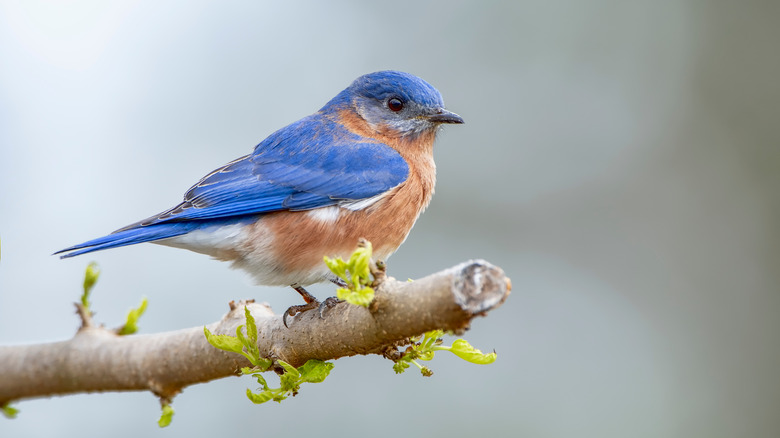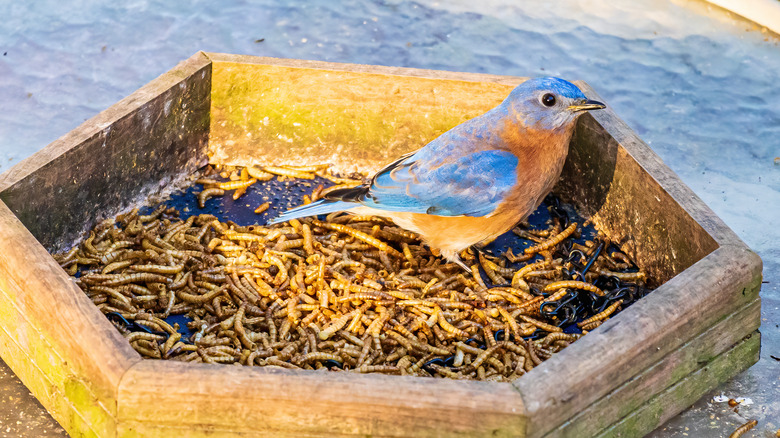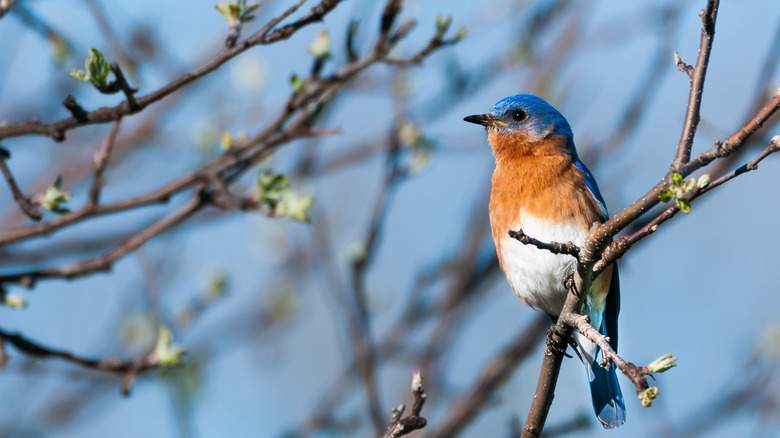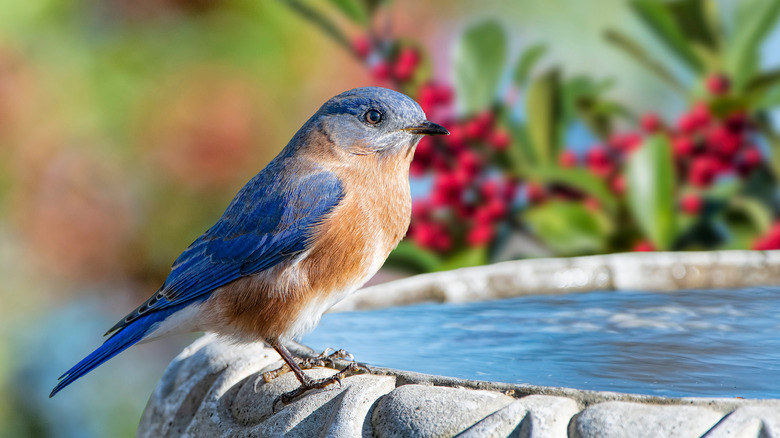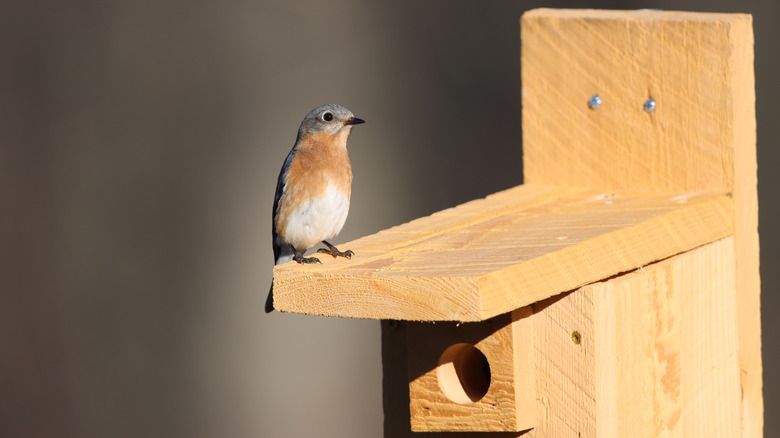How To Attract Bluebirds To Your Garden
Birders and gardeners love to see a small population of bluebirds enter their backyard every season. They are some of the most desired backyard birds for their unique coloring and charismatic personalities. According to The Spruce, there are three types of North American bluebirds: the eastern bluebird, western bluebird, and mountain bluebird. All the different varieties of bluebirds are partly migratory, meaning some will migrate while others won't. As per Sonoma Birding, if you've correctly attracted bluebirds to your garden and begun breeding, you will likely see these birds come back to your lawn.
Luring bluebirds into your garden can be a tricky task. These songbirds are not particularly fond of humans, and they will do their best to avoid you. But when you put in the right kind of work, you'll be able to hear their beautiful songs and enjoy their graceful presence, and your pest problem will dwindle, too.
Set up places for bluebirds to feed
By nature, bluebirds are insectivorous, although they are known to eat fruits, berries, and nuts when their options are limited. If you are serious about inviting these birds into your garden, you'll first need to set up places for them to feed. You can use any bird feeder you have on hand, but instead of using bird feed, you'll need mealworms, as explained by the Bluebird Landlord.
The Spruce tells us that we may also consider using small pieces of fruit, berries, suet, peanut hearts, or broken up eggshells to attract the birds and supplement their diets. Don't hesitate to install more than one feeder. Several different feeders, such as trays, tubes, or the hanging variety, can help you quickly attract bluebirds. When choosing feed for your bluebird population, make sure that you avoid whole peanuts, mixed birdseed, cracked corn, and hummingbird nectar. Bluebirds aren't fans of those meals and may be deterred by these inedible options.
Grow the right plants and trees
In addition to setting up bluebird feeders, it's also wise to plant bushes and trees that the birds can eat from and perch in. The Bluebird Landlord suggests blackberry bushes, raspberry bushes, and elderberry bushes, as well as foster holly, flowering dogwood, and Eastern red cedar for shelter and food. Don't start digging out your old plants and trees right away; some trees you already have in your yard may be great for nesting bluebirds. Dead trees, in particular, can make great spots for bluebirds to create a nest and lay eggs. However, don't fret if you don't have a dead tree. There are a few other nesting options for these birds.
If you plan to plant any of the trees or bushes that bluebirds are attracted to, be careful that you space them apart generously, as told by Sonoma Birding. Cramped backyards will not be appealing to them. Do your best to provide for the unique birds while also leaving them plenty of room to hunt for insects in the grass.
Provide a water source
Your bluebirds will need a water source to bathe in and drink from. Like most smaller birds, they prefer shallow birdbaths. As per the Seabird Sanctuary, you should consider investing in a fountain bath that moves the water. This will first help attract the bluebirds that like the sound of running water. It will also keep it fresher as stagnant water can be a breeding ground for bacteria.
If you want these creatures to continue visiting your garden year-round, you should also consider buying a heated birdbath. This will keep the water from freezing in colder climates, allowing the bluebirds to enjoy a constant water source. When picking out a fountain for your bluebirds, it must be large enough to accommodate several of them at once. Some varieties can host as many as twelve birds, all looking for a drink of water or a quick bath.
Build useful shelters
Though it may seem counterintuitive, bluebirds won't like your garden if you don't have lots of open space. They do not enjoy staying in yards with mature, densely packed trees no matter how many nesting options they provide. Instead, they'll choose a place away from buildings and trees in a grassy area, and they will take shelter in nesting boxes attached to a post, a fence, or a single tree.
Audubon suggests gathering weather-resistant wood, screws, and nails to build your own bluebird nesting box. The construction process is similar to creating any other kind of birdhouse. Make sure that it will be plenty large for the birds to go in and out of when cutting your wood pieces. On two of the walls, drill out at least two air holes, and on the front, make an entrance hole. The roof piece should also extend out further from the rest of the house so the entrance is protected and birds may easily sit on top. After screwing together your birdhouse pieces, you can mount the shelter to a tree or a tall post. Individual nesting boxes should be spaced at least 300 feet apart and be hung at least 6 feet from the ground.
